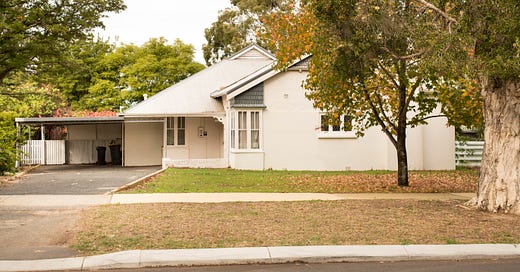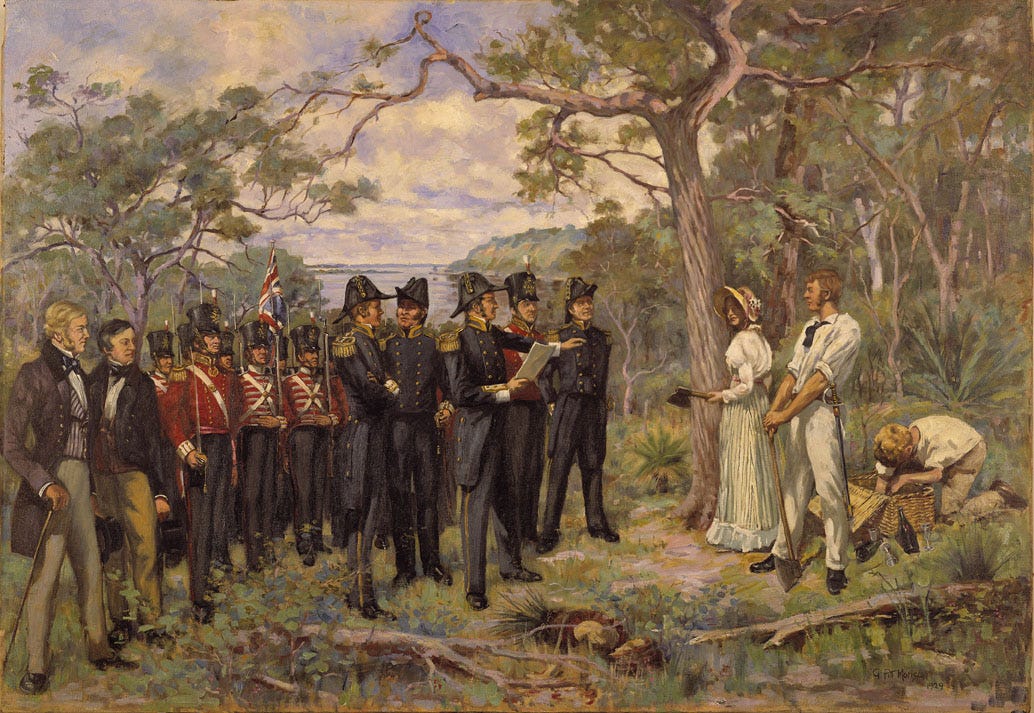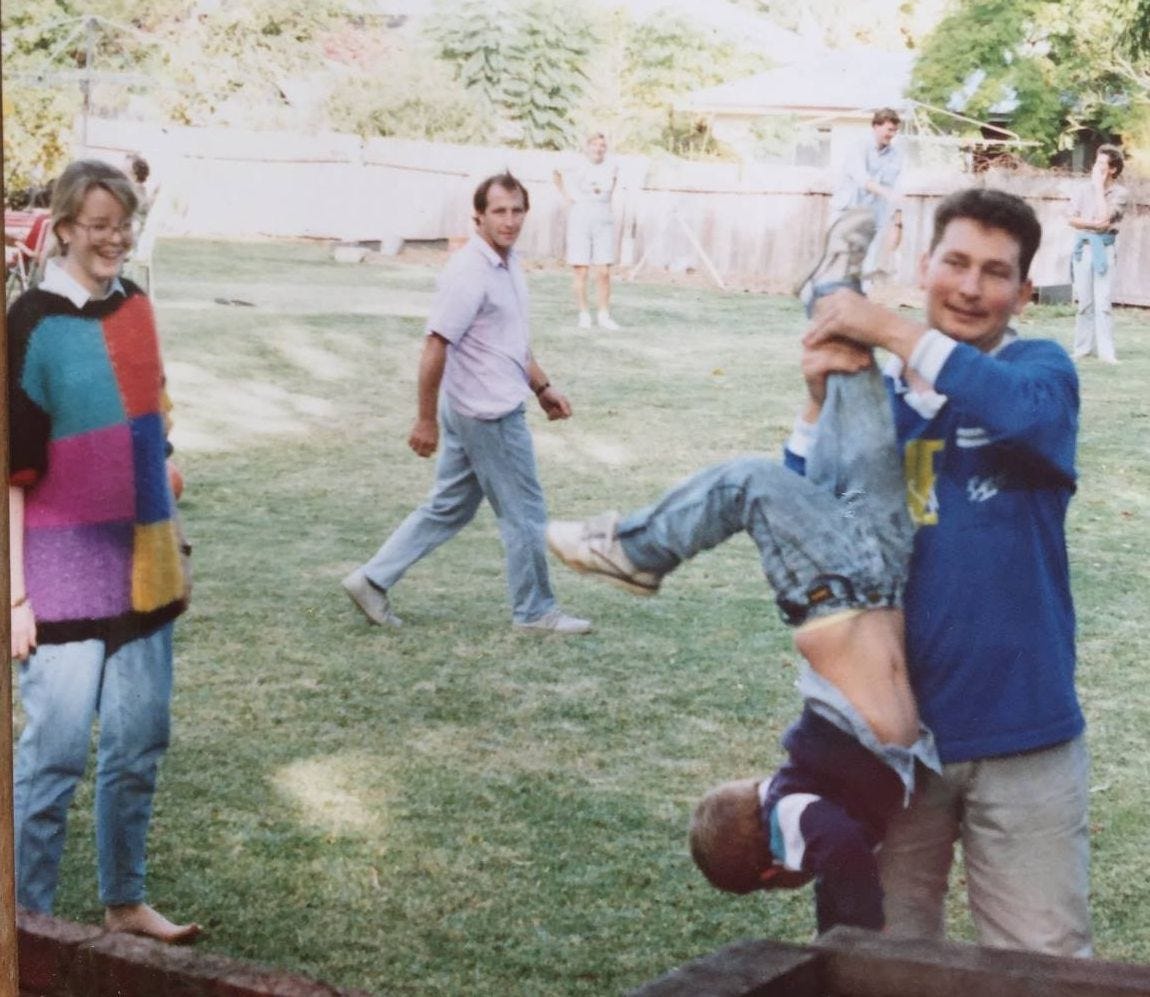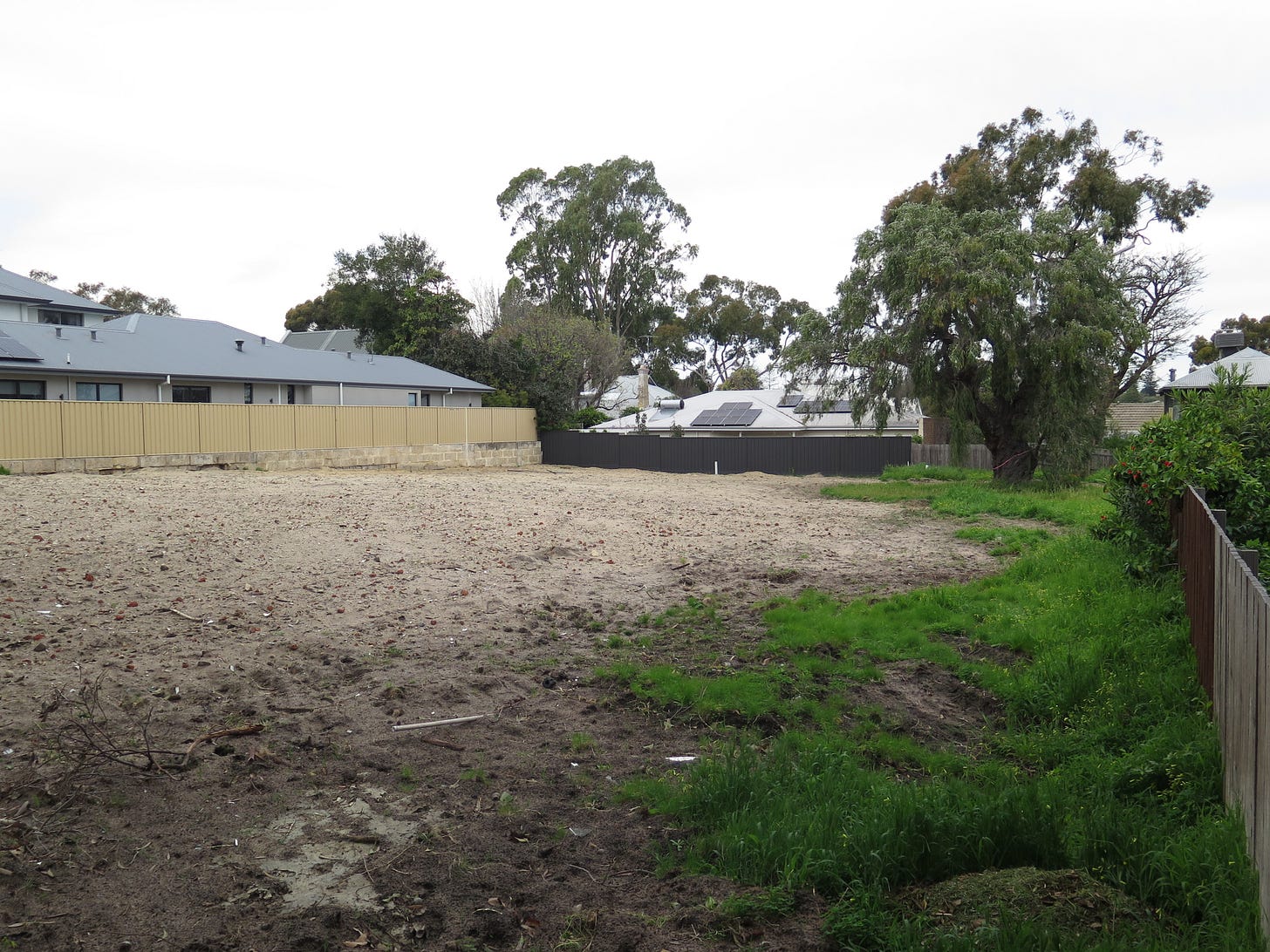The house I grew up in was demolished the other day.
No big news, you probably think, given that houses come and go like the waves at North Cottesloe.
It was a plain house. Big. Solid. Unpretentious. Three bedrooms for a family of seven. One toilet. One bathroom. A colour television about a decade after they first came in.
A dining room big enough for a couple of dozen rellies to crowd around the table when it was our turn on the roster to host Christmas lunch.
The house was in a quiet street in Swanbourne, a 10-minute bike ride from the beach and a drop kick from the local primary school.
The house at 6 Fraser Street
We often got lost tourists asking for directions because they got off at the train station a few blocks away and thought the infamous nudie beach was just around the corner, not a long hot slog past the SAS barracks where the crackle of gunfire was as ever-present as the Friday night roar and whiff of burning engine oil drifting from Claremont speedway.
The house was significant only in that it was built in 1903 by George Pitt Morison, the inaugural WA Art Gallery curator who, leading into the 1929 centenary celebrations, created WA’s most famous painting The Foundation of Perth in the wooden shed we later used as our garage.
GP Morison painted The Foundation of Perth at Fraser Street in 1928
The garage was badly shaken in 1968 by the earthquake that hammered Meckering.
A few weeks later, with the garage wobbling more and more in the sea breeze, my father tied a rope to a corner post, attached it to the tow-ball on his two-tone green Holden FB sedan and pulled the rickety thing down.
That was a good result.
It opened up the backyard and made our footy field even bigger.
It was big enough to start with given that our block was 3/8 of an acre, or 1518sq.m, with far more of it grass than house or garden.
It included a full-size tennis court on one side that was used for a little while before it was repurposed as a cricket pitch, regularly rolled and marked, and enhanced with the occasional bucket of clay from Cresswell Park or Cottesloe Oval to augment the playing surface.
What a field of dreams it became.
When Test matches weren’t being played over gruelling six hour days in the middle of summer, broken by lunch and tea breaks, of course, and bitter arguments over dismissals and interpretation of the various scoring zones, it was a football arena where grand finals and state matches were decided by the last kick of the night.
The teams ranged from me taking on my brother Jim up to hordes of youngsters - Clarkes, Harringtons, Harrisons, Hobbs and sundry others - who would flood from nearby houses and streets to compete in the most ferocious after-school kick-to-kick contests.
How many modern-day kids enjoy the opportunities and privileges that such an environment provided?
How much sporting talent is stifled because great swathes of suburban grass, the nursery for generations of Australian athletes, has been monetised into strips of lucrative concrete and glass.
Progress comes at a cost, as it will in the now-vacant block in Fraser Street, but the reality is that the loss of the backyard has hit harder than the demolition of the house that was my home for 20 years and in the family for more than half a century.
Family fun in the backyard
Steve Waugh used to talk about his backyard at Picnic Point Road in Sydney’s suburban Panania.
There was ample room to hit on the legside which helped to shape the powerful strokes employed by him and his twin Mark over hundreds of appearances for Australia.
Or wicketkeeper Ian Healy, whose unorthodox backyard shape in Biloela provided little incentive to play cover drives but made cut shots squeezed past the edge of the house his most effective scoring zone. Remember Healy’s bread-and-butter shot in 119 Test matches?
None of the youths who populated our backyard came close to matching those players but we, or certainly I, was a product of our environment.
It was 32 metres from the corner of the tennis court to the back corner near the Hills Hoist which became the diameter of our sporting world.
Imagine a modern backyard with a 32-metre stretch of flat, hard grass without a flower or pool to spoil the idyll.
It was only years later that I realised that I was never more comfortable shooting for goal in my mostly moderate amateur football career than when on a 45-degree diagonal from about 32 metres out.
It is not a difficult kick but I can’t recall missing one from that position in 12 years of reasonably regular amateur appearances.
That was the natural shape of our backyard battles – me in the north-west corner, my brother in the south-east section.
Kicks over the fence would land amid the strawberries in Monty Buttfield’s backyard, startling his fox terrier Cedric, but never upsetting a man who, alongside Mal Brown, had a profound influence on the junior footy pathways in the Claremont district.
Hour after hour we would kick to each other until the light got too poor and mum called us in for crumbed brains and mashed potato, or glorious day, roast lamb with peas and extra gravy.
Often barefooted, too, with the legacy bruised and swollen blue upper parts of the feet that would take weeks to subside.
The field is no more. Now a sandy waste dotted with bits of brick and the slabs I laid painstakingly under the pergola on stinking hot Saturday mornings, it contains little more than memories.
The backyard is now vacant
But what memories they are.







The author of this article failed to mention another important player- me! A little sister who was “allowed” to be wicky. It was somewhat a shock to my little body when a Springer bouncer struck my tummy and left a leather cricket ball sized red mark for weeks! I was relegated. Replaced by a red cloud kelpie border collie cross called Otto marking him as the 8th member of the team. I was not permitted to bowl or bat. My very limited amateur cricketing period at age over 40, was marked by my exceptional fielding. Happens when you have 3 brorhers and a working dog chasing you down. On your tail! Great memories too, folded away
Great article John this is another issue in the current push for ridiculously small suburban blocks which is developers promising to provide open space or ovals in these developments but are inadequately small. Something needs to be done about this the green movement is providing cover for developers to make more profits instead of outdoor space for our kids.